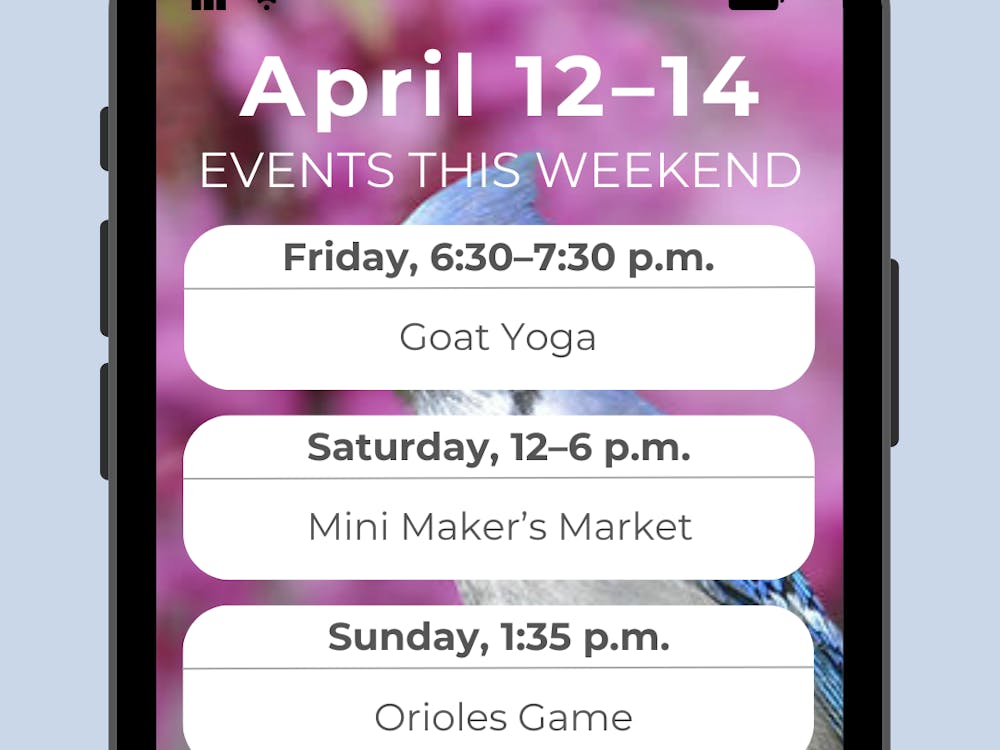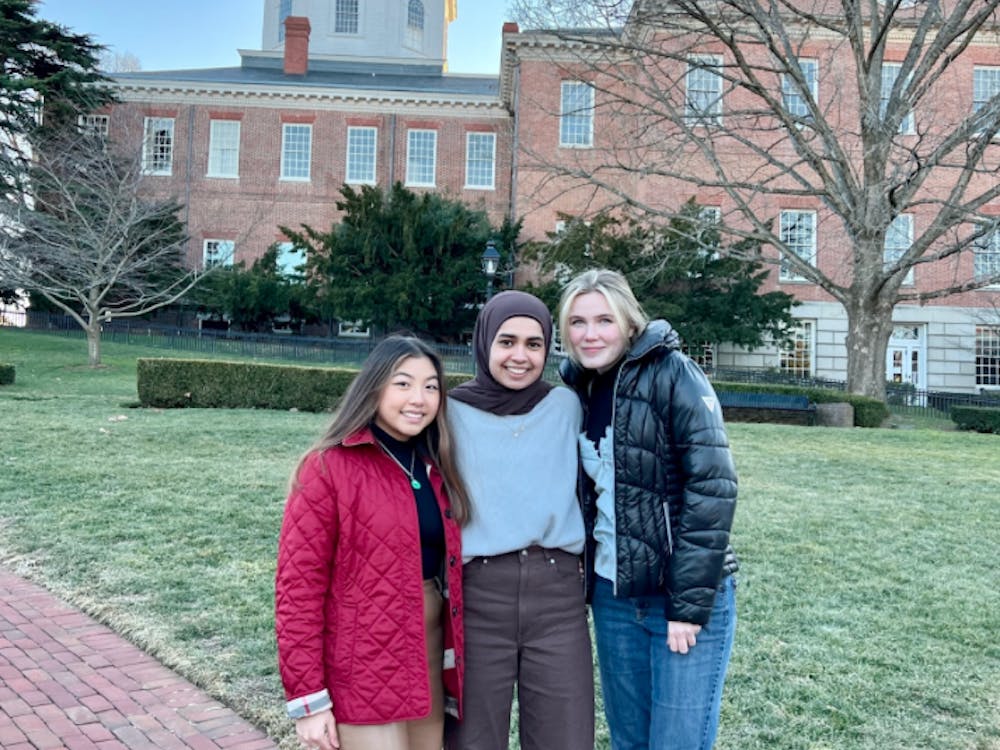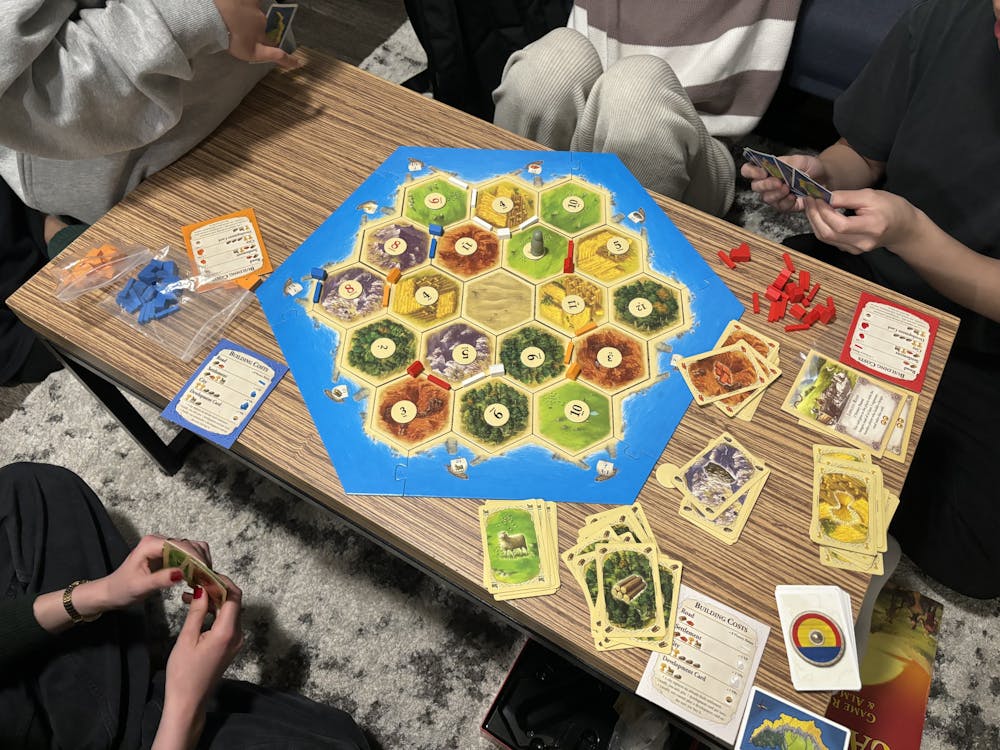Two goals of mine this past semester were to spend more time off campus and to see more theater. I was aware of Baltimore’s substantial and vibrant theater community but previously had never prioritized making time to see shows.
At the beginning of October, I conscripted a friend into seeing Lear by Young Jean Lee at Single Carrot Theatre.
Single Carrot is on North Howard Street, within walking distance of campus. The theater’s convenient location makes it a great first step into the world of theater in Baltimore — the shorter travel time means it’s easier to carve out time to see a show.
Single Carrot is located in a plain brick building attached to the butchery restaurant Parts & Labor, which probably explains the somewhat woodsy vibes (and smell of smoked meat) as we walked there.
Outside there is a marquee that announces the current show. Single Carrot’s lobby is very small and intimate, with a ticket window and a winding hallway that leads to the performance space itself.
The theater is also intimate. Although this was the first performance I’d attended at Single Carrot, I got the sense that the space was very flexible and could be reconfigured depending on the show.
Lear was done on a thrust stage, with audience seating on three sides. The set was minimal but well-crafted.
My friends and I sat in the fourth row of the center seats. If we had been in the front row, we would’ve been only a few feet from the actors.
Overall the play was evocative, if a little confusing. As per their mission statement, Single Carrot is dedicated to “theatrical innovation in Baltimore” and stages works that are socially significant and capture the diversity and artistic vibe of the city.
I also saw Lee Hall’s adaptation of the Tom Stoppard screenplay Shakespeare in Love at Baltimore Center Stage, which is located a block down from the Peabody JHMI stop.
Center Stage has two performance spaces in the building: the 500+ seat Pearlstone and the much smaller Head Theater. Center Stage is sizeable — a lot bigger than the tiny, intimate Single Carrot theater, which contributed to their vastly different feelings.
To get to the Pearlstone, where Shakespeare in Love was being performed, we had to walk up three flights of stairs from the lobby. We had balcony seats that nonetheless provided an excellent view of the stage.
Shakespeare in Love was far more elaborate than Lear, with a two-story set that had moving components, various costume changes, multiple period-appropriate dances and a (very cute) dog. Center Stage clearly has more resources than the smaller Remington theater and uses them well.
Yet despite the bigger scale of the production, it didn’t feel distant or stuffy.
The performers created a welcoming atmosphere: Before the show officially started, various actors wandered on stage and “practiced” stage combat.
My most recent theater experience was at the Hippodrome, for The Lion King.
The Hippodrome is the farthest of these theaters — you have to take the Charm City Circulator downtown to its Fayette Street stop to get there.
As Baltimore’s largest theater, the Hippodrome brings in bigger budget, more elaborate shows.
In addition to The Lion King, it will also host The Nutcracker and Broadway musical Waitress in the coming months, as well as musician St. Vincent and comedian John Oliver.
Each experience had its own merits.
Single Carrot was intimate and really felt like a piece of Baltimore.
I appreciated the way that Center Stage allowed audience members to connect with the performers, despite its larger scale.
And I was awestruck by the grand costumes and breathtaking set that the Hippodrome’s large budget could provide.
There’s no wrong way to experience theater in Baltimore, and I recommend everyone (even non-“theater people”) look into all of these phenomenal spaces.






















Please note All comments are eligible for publication in The News-Letter.